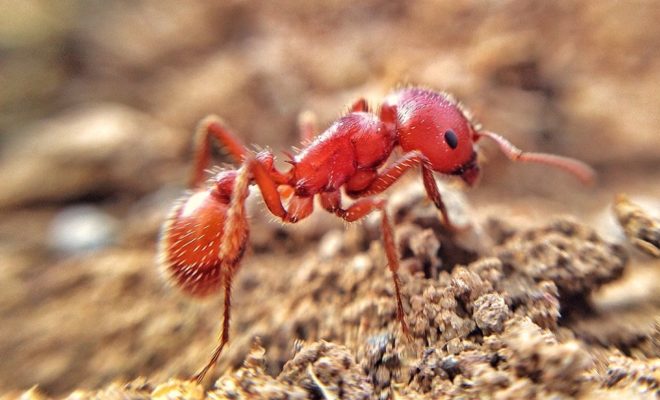It has happened to all of us. One minute we are minding our own business enjoying the fresh, Hill Country air, and the next we are frantically ripping off our shoes, tears rolling down our face, with barely disguised obscenities flying from our lips. What could possibly initiate these type of hysterics in a full grown adult? None other than the piranha of the plains: the fire ant.

Lifestyle
Dousing the Fire: How to Control the Spread of Red Imported Fire Ants
A Quick History

Photo: Pixabay
Red Imported Fire Ants (RIFA) are an aggressive ant species that have invaded over 370 million acres across the United States and Puerto Rico since being introduced sometime in the 1930s. Originally from South America, it is believed the pests first entered the country through the ship port in Mobile, Alabama.
Since that time, they have spread rapidly. As recently as June 2017, several news outlets were urging residents in areas affected by Tropical Storm Cindy to be aware of “floating mounds of fire ants.” Talk about terrifying!
In fact, RIFAs have taken over such an extensive amount of territory that the USDA and Animal Plant Health Quarantine Service have instituted large quarantine areas in the hope of slowing their persistent spread. Currently, items quarantined range from baled hay to used soil-moving equipment.
However, humans are not the only ones likely to fall victim to the horrendous sting/bite combination of the little devils. According to research conducted by the University of Florida, RIFAs have contributed to the decline of Texas’ state reptile, the horned lizard. The study also mentioned wild deer and ground nesting birds as other species experiencing negative, and at times even lethal, effects due to the invasion of this foreign ant species.
Addressing the Problem

Photo: Facebook/Florida Time Forgot photo by Mark Renz
So what can be done to prevent these highly aggressive critters from taking over your yard? While the Texas A&M Agrilife Extension Agency insists no method will completely eradicate the problem, you can take steps to control the rate of spread.
Ideally, the agency said RIFA should be treated between late Aug. and the month of Oct. Doing so will allow whatever “bait” is used to work throughout the winter months. In order to be most effective, the agency also encourages the use of the “Two-step method.”
For this method, bait is first applied broadly across the entire affected area at least once, but possibly twice in a year. Secondly, individual mounds and problem areas are addressed on an “as needed” basis between overall treatments. For this step, products created specifically for individual mound treatment work best.

Photo: extension.org (downloadable)
Suffice it to say, RIFA will not be garnering many votes for “Texans’ Favorite Insect.” It is not probable they will be hopping a boat back to South America anytime soon, therefore it is important to be vigilant when exploring the outdoors. While they may be here to stay, there are plenty of ways to keep your yard, and life, ant free.
References:


